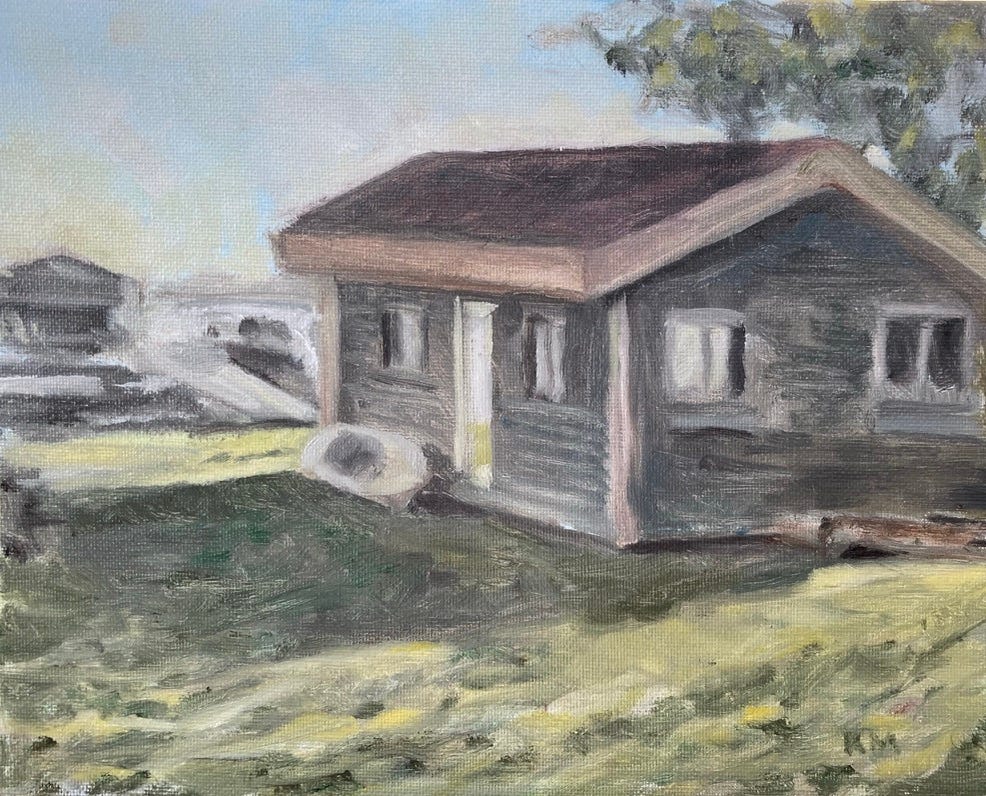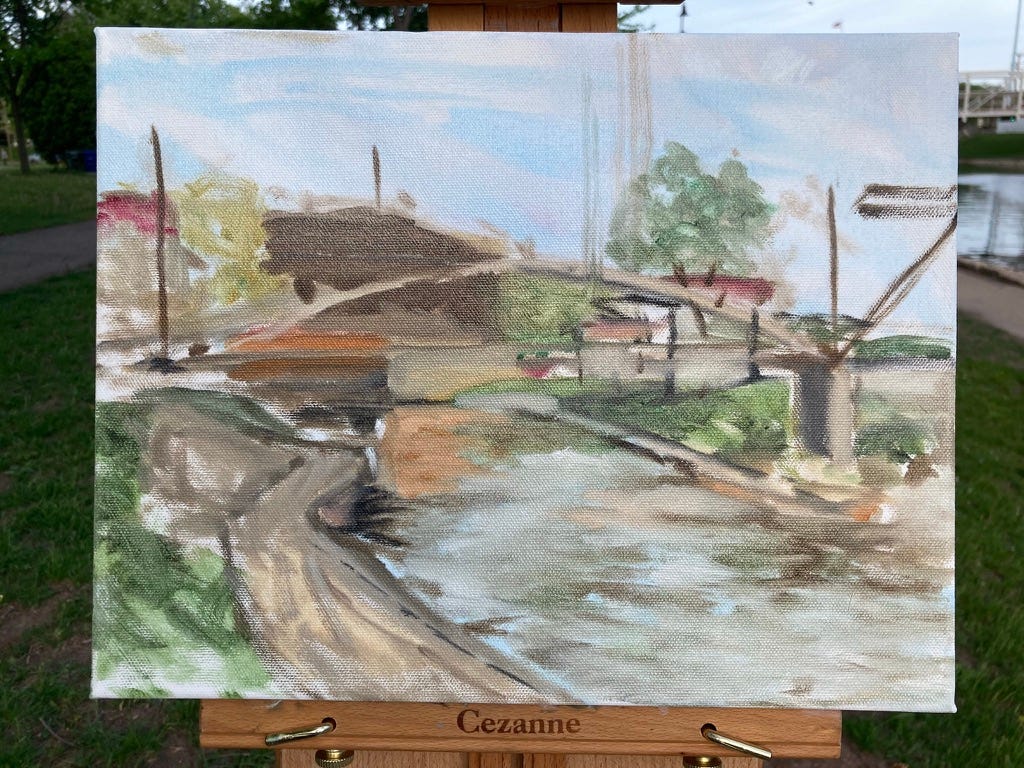Is it done?
When I paint at the local park, there’s been a common question people ask as they wander by and see the in-progress canvas: “Is it done?”
It’s not such an easy question to answer. It could be done. It might not be. I don’t know the answer any more than they do. Usually my answer is “maybe, we’ll see.” If the brush keeps moving in the next few moments, then no, it’s not done. If the sun starts to set and the light changes too much, but I come back the next day or the next week to keep painting, then no, it’s not done. If I look at the canvas and at the subject and look for areas of imbalance or unsteadiness, and I don’t find any, and I feel a sense of rest and wholeness, then maybe it’s done and it’s time to sign it.
The painting could be done at any moment. When I paint, I go in with a strategy. I want to develop the entire picture as a whole, bringing the entire canvas through a sequence of stages of development. The first stage is a sketch, of course, rough, fuzzy, and inaccurate. With each cycle, the image becomes clearer and more specific as adjustments are made and relationships are established. It’s not developed one section at a time but all sections at once, quickly moving around the whole canvas. Following this strategy, the picture is always in a state of wholeness and completeness even if it’s rough and fuzzy. Each cycle maintains this whole and preserves its unity—what Christopher Alexander called “structure-preserving transformations.”
In fact, a certain degree of roughness is a requirement for wholeness. Developing one area of the canvas much more than the rest will create an imbalance, a disunity and partitioning of the whole into distinctly separate parts out of communication with each other. Even adding too much detail overall can lead to a surreal sense of unrelation, where boundaries are stated too strongly to hold together as a whole.
And so, the painting could be done at many different moments, with varying degrees of roughness. Always complete, always whole, but… then how can you tell when it’s “done” and time to sign it? Well, first, there’s the budget. When painting outside, there’s only so much time in a day and a limit to my energy. Eventually the sun will set or shift direction too much, and the scene becomes a different picture entirely than the one I started with. So, times up, time to move on. Maybe I’ll go back the next day or the next week and continue, give myself another swathe of time to paint with. But even then, eventually the season changes, and beyond that, everyone has an ultimate limit on the time available to them. We might not know how much time will be available when we start painting, so we develop the whole together, so that it’s complete no matter when it’s time to move on.
Second, there’s the sense of equilibrium. This is a sense that the painter develops the more they paint—a sense of how the forces at play within the subject and the painting and themselves are relating to each other and hold each other together no matter how energetic or powerful they might be. The eye moves around the image, and back and forth to the subject, and checks for areas of getting stuck, areas where the movement stalls or changes too quickly. If it doesn’t get stuck, if no particular center gives a hint of being out of relation to the rest or underdeveloped, it might be done. When the mind and the painting are at rest, the eye roams freely and dynamically, each visual pathway and center leading into each other, each center matching the level of development of each other center, supporting each other as a whole. It feels as though no single point is underdeveloped, and as though developing any single point further would only reduce wholeness. This might sound like intuition, but I don’t think it is—it can be experienced directly in the senses.
And so, the painting is done when the mind, the eye, and the picture are at rest with each other, when the forces at play move freely within the whole and resolve each other. And, it’s done when the sun sets and the season changes, and it’s time to move along the way life moves.




